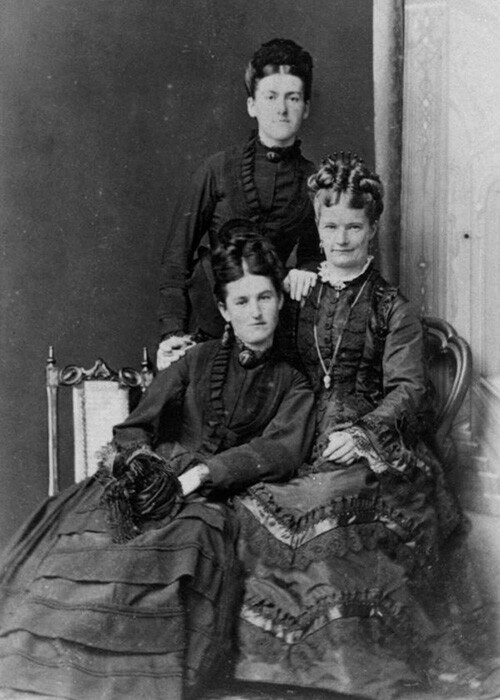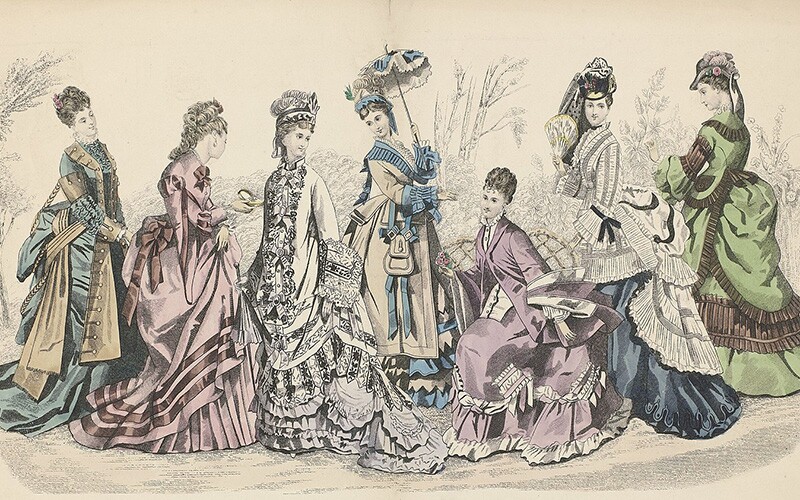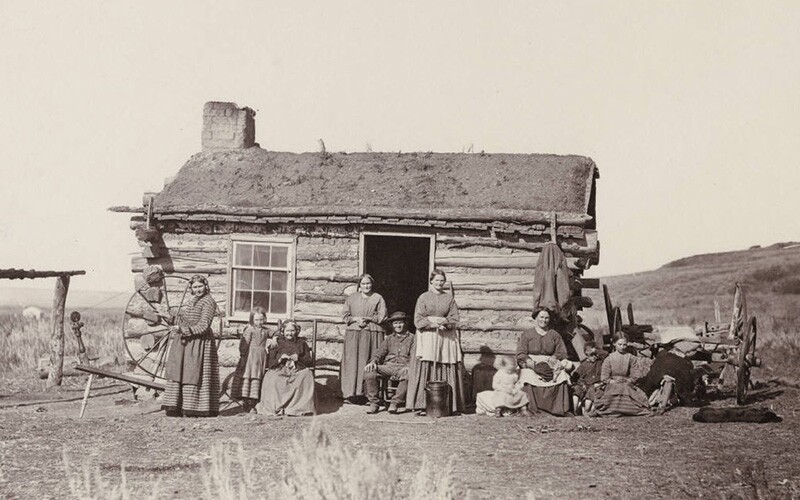In the 1870s, women’s dresses were elaborate and highly decorated, while men’s clothing remained simple and solemn. Women wore gowns with bustled skirts and bright or earth-toned colors, intricately decorated with ribbons, lace, folds, and ribbons, a trend that would continue into the 1880s. Children’s fashion followed the trends of their mothers and fathers. Let’s take a deeper dive into 1870s fashion trends.
How Did Women Dress in the 1870s?

Throughout the early 1870s, women’s fashion hinged around brightly colored dresses with bustles, which were elaborate folds of fabric in the back of the dress. Underskirts with ruffles and pleats helped create volume. Dresses were often cut away in the back to expose the decorative underskirts.
By 1877, bustles started to disappear, only to reemerge in 1880s fashion. For the last few years of the 1870s, women’s dresses were formfitting, creating a slender silhouette. Corsets and boned bodices achieved the desired shape.
For formal occasions, women wore elegant evening gowns, trimmed with silk, lace, and ribbons. Sloped necklines with small, off-shoulder sleeves were common, often accompanied by stylish gloves. Women also started wearing ribbons tied around the neck, trailing down the back—a style that would become the predecessor of modern-day chokers.
To accompany their outfits, women wore their hair in tight ringlets, often piled high in knots at the back or on top of their head. Bonnets helped keep the elaborate hairstyles in place, and artfully placed ringlets framed the face as the final touch.
As bustles disappeared toward the end of the decade, tight ringlets did too. In their place, women wore their hair in chignon knots, a tight coil in the back of the head.

How Did Men Dress in the 1870s?
Men’s fashion in the 1870s remained fairly consistent with previous years. They wore three-piece suits in dark colors, often accompanied by either a frock coat or a morning coat. Frock coats were fitted with buttons along the torso and flared at the waist, ending just above the knee. Morning coats were a more casual alternative. The coat was shorter and tapered away at the waist.
Most men wore winged collars on their shirts with bowties for decoration. By the end of the decade, ascots emerged as an alternative to bowties. On most days, neckties were darker in color, but white was favored for formal attire.

As the final accessories for their outfits, men often wore hats, including top hats, bowler hats, and straw boater hats. Their shoes were square toed with low heels.

What Did Children Wear in the 1870s?
Infants and toddlers in the 1870s usually wore long, white gowns, allowing them to explore and play in comfort. It wasn’t until children were around five or six that they wore gender-specific clothing.
At that age, girls started wearing short dresses that hit above the knee. As they grew older, their dresses grew longer. By the time they were 12, girls’ dresses were knee-length, and they gradually lengthened until they were ankle-length in their later teens. Like their mothers, girls often wore dresses with padded bustles.
Similarly, boys started with short trousers that lengthened as they grew older. The older they got, the more they dressed like adult men. Boys’ suits were often accompanied by Norfolk jackets, fitted jackets that fit the length of the torso.
What Did Poor People Wear in the 1870s?
While bustled dresses and three-piece suits were fashionable in the 1870s, they weren’t practical or affordable for everyone. In poorer households, you’d be more likely to find dark, simple dresses and suits. Dark colors were easier to clean and cheaper to make without the dyes required for bright colors. Women wore bonnets to protect their hair in working conditions, and both men and women often wore heavy working boots.
One notable introduction came from California, USA, with hopeful gold diggers looking for durable working pants. At the time, Levi Strauss started selling blue jeans, a fashion that took hold and still dominates many people’s wardrobes.

What Did Your Ancestors Wear in the 1870s?
Did your ancestors sport the elaborate bustles of women’s fashion or the regal top hat? Or did they favor the more practical and simple fashions of the time? Find out with FamilySearch Memories, a free tool that allows you to search stories and photos other users have added to the Family Tree. You can also add your own pictures to share with others.











